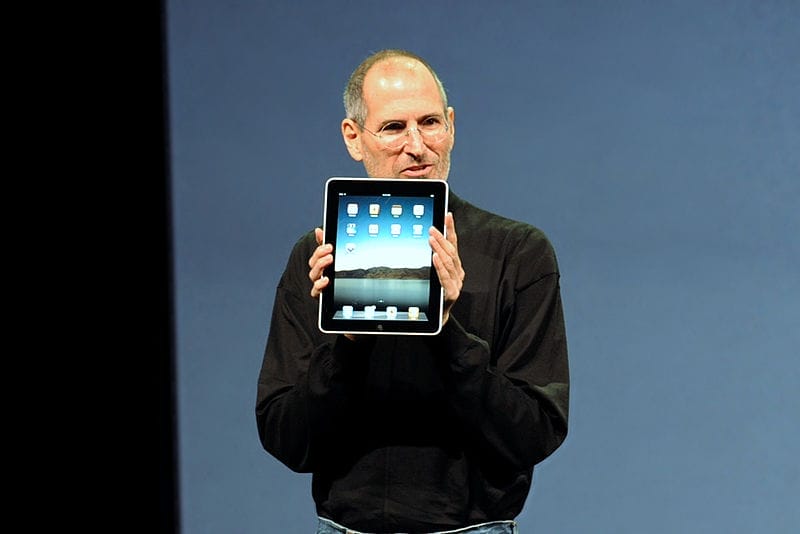Steve Jobs sadly left this world nearly two years ago. But thanks to a September interview I did with a consultant who worked closely with Jobs, you can get a close look at how he was able to forge a key partnership with AT&T that helped get Apple’s iPhone off the ground.
In June 2007 when Apple’s first iPhone was sold, cellphones were already a big market. But by 2009, Apple ended up with 30 percent of it. How did Jobs convince AT&T to give Apple a groundbreaking deal in exchange for the exclusive right to service the iPhone in the U.S.?
In 2005, Jobs decided he wanted to build a mobile virtual network operator (MVNO) to service the iPhone. According to Garrick Gauch, who worked as an MVNO expert at Boston-based telecom consultant Adventis, and later CSMG, “Jobs’ initial concept was for Apple to own and control the end-to-end sales, service and support of the iPhone—all he needed was an MVNO contract.”
Lesson 1: Get the best help you can.
Around April 2005, Jobs called Adventis CEO Raul Katz and summoned him to Apple’s headquarters in Cupertino, CA. Gauch then got a call from Katz, who said, “I need you on a plane to Cupertino. It’s a small team—hush, hush—the code name for the project is Vogue.”
“We flew to Cupertino and walked into the boardroom where most of Jobs’ direct reports—including Eddy Cue, Phil Schiller, Peter Oppenheimer and Greg Jozwiak—were waiting for us,” Gauch said. “I was sweating bullets because I had to present the [slide] deck to Jobs—a business legend.”
Lesson 2: Declare an impossible-sounding goal.
Gauch recounted that Jobs strode confidently into the conference room and said, “Here’s what I want to do. I’m gonna come out with a phone.”.
“Steve pretended he had an iPod in his right hand and a cellphone in his left hand. He said, ‘I want to put the two together,’ and he smashed his hands together.”
Gauch said Jobs explained that the phone would be “tethered to the computer in a way that no phone had ever been before. You will be able to jam this into a cradle, hit a button, and it will synch all your contacts, emails, calendar dates, photos and music automatically. Can you imagine that?”
Then Jobs said, “I am going to sell this device to my customers both online and through select Apple retail outlets. I want to offer unlimited voice and data contracts, open Internet access via Wi-Fi, and I’m going to provide all the service, billing and support for $49.95 a month!”
The Adventis team was stunned. “When Steve finished, the entire room was completely silent,” Gauch said. “We were just floored. We hadn’t seen anything like this before, and truthfully none of us were quite sure how any of this could get done.”
Lesson 3: Shift responsibility for achieving the goal to a great team.
Jobs was framing the impossible, and Adventis felt obliged to tell him so. But Jobs did not retreat.
“From that point on, he challenged us to believe in his vision and that there was a way to get it done. There was no talk of defeat,” Gauch said.
Over the next three weeks, Adventis worked with Jobs to prepare a deck that he would present to AT&T Mobility President and CEO Ralph de la Vega in Atlanta, but the meeting was a failure.
“We heard that Steve and Ralph were talking past each other. AT&T thought it was too high a risk,” said Gauch.
Lesson 4: If at first you don’t succeed, delegate.
By 2006, Jobs had gotten frustrated with the AT&T deal and delegated the work to Cue.
Gauch, along with senior executives Andrew Cole and Erfan Ahmed, by now all at CSMG, worked with Cue to calculate the impact of the iPhone on AT&T’s long-term value (LTV) per subscriber—a key success measure for carriers.
The CSMG team was able to show AT&T that the carrier would extend the lifetime value of its customers if they adopted the iPhone.
Gauch recalled that “When Steve saw the presentation, he told Ahmed, ‘I get it. I like it. I think it will work. Now you and Eddy go and negotiate with AT&T.’”

























